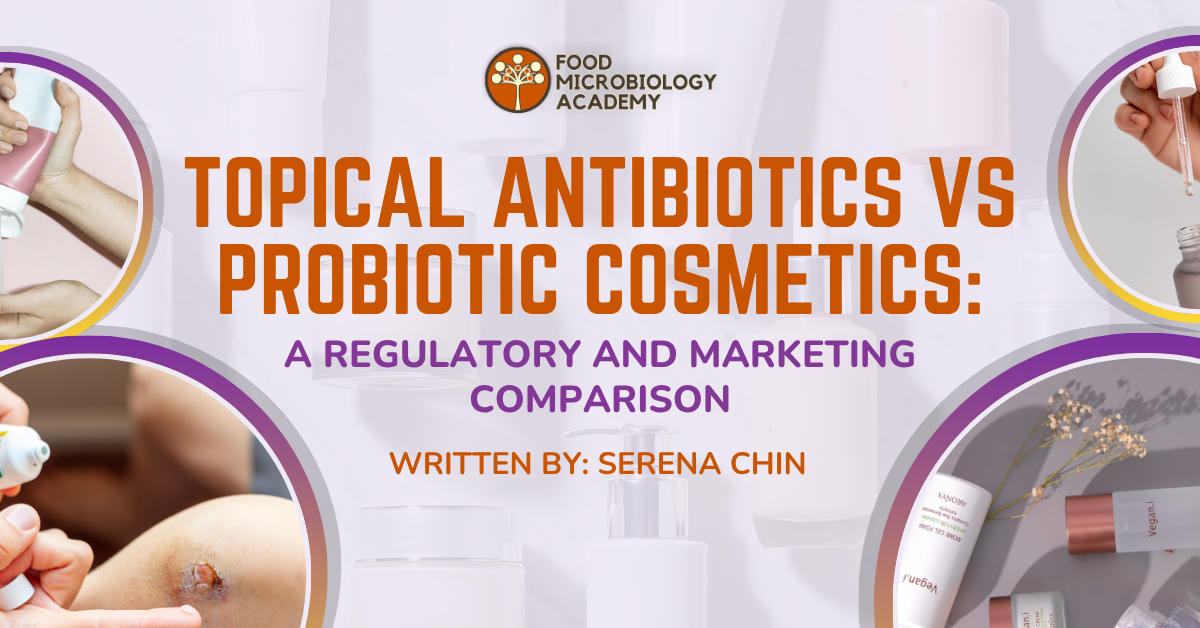Topical Antibiotics vs. Probiotic Cosmetics: A Regulatory and Marketing Comparison
As skincare science continues to evolve, two contrasting approaches have gained widespread attention; prescription-based topical antibiotics like clindamycin, and probiotic-based cosmetics such as esmi Probiotic Skin Mylck, which contains bacterial lysates. While both aim to improve skin health, they operate within vastly different clinical, regulatory, and marketing frameworks. This article explores these differences, focusing on regulatory approval pathways, clinical trial requirements, and how they are presented to the market. How they work: Mechanism of action Topical antibiotics like clindamycin are prescription-only creams or gels used to treat acne. They work by targeting Cutibacterium acnes (C. acnes), a bacterium that resides deep in hair follicles and contributes to inflammation and blocked pores. Clindamycin binds to the 50S ribosomal subunit inside the bacterial cell, inhibiting protein synthesis, so the bacterium cannot produce essential proteins for growth or function. Clindamycin also has anti-inflammatory properties, reducing cytokine production, molecules involved in inflammation, such as IL-1β, IL-6, and TNF-α. Clindamycin also limits neutrophil recruitment, immune cells regulating inflammation, thereby reducing swelling, redness, and irritation. Probiotic lysates, in contrast, are non-living fragments of beneficial bacteria such as Lactobacillus rhamnosus (L. rhamnosus), used in skincare to support the skin barrier and reduce irritation. These bacterial lysates modulate the skin’s innate immunity, improving barrier function rather than targeting acne-causing bacteria like C. acnes. Probiotic lysates help downregulate inflammatory cytokines such as IL-8 and TNF-α, and support tight junction proteins to reduce transepidermal water loss (TEWL), thus retaining skin moisture. In essence, probiotic lysates act as skin soothers and repair enhancers, rather than antimicrobial agents. Regulatory classification and pathway to market In Australia, topical antibiotics such as clindamycin are classified as Schedule 4 prescription-only medicines under the Standard for the Uniform Scheduling of Medicines and Poisons (SUSMP), which determines how medicines and chemicals can be accessed and supplied, as defined by the Therapeutic Goods Act 1989. These products must be listed on the Australian Register of Therapeutic Goods (ARTG) and undergo rigorous pre-market evaluation. Approval requires high-quality evidence from controlled clinical trials demonstrating safety, efficacy, compliance with Good Manufacturing Practice (GMP) standards, and adherence to labelling requirements (Therapeutic Goods Administration [TGA], 2024). For example, NOVADAC Once Daily Gel, a combination of clindamycin phosphate (1% w/w) and benzoyl peroxide (5% w/w), was registered in the ARTG on 29 May 2024 following extensive trials. The TGA also provides product-specific guidance for topical dermatological medicines, including requirements for bioavailability and formulation assessments for generics, products containing the same active ingredient as the reference product (Generics and Biosimilars Initiative, 2010). Advertising for these products is strictly regulated. They may only be marketed to healthcare professionals and not directly to consumers, in accordance with TGA Advertising Code guidelines. This approach protects consumers against self-diagnosis and misuse of prescription antibiotics and supports broader efforts to combat antimicrobial resistance. Conversely, probiotic cosmetics such as esmi Probiotic Skin Mylck are not regulated as medicines, but as cosmetics. They fall under the oversight of the Australian Industrial Chemicals Introduction Scheme (AICIS), which manages chemical safety, and the Australian Competition and Consumer Commission (ACCC), which enforces laws around fair marketing and advertising practices. Therefore, these products are not subject to pre-market approval, provided they do not make therapeutic claims. Cosmetic claims such as “supports the skin barrier” or “hydrates the skin” are allowed, but any statements implying treatment of acne or bacterial action may place the product under TGA regulation. Furthermore, ingredient labelling must comply with INCI (International Nomenclature of Cosmetic Ingredients) standards, and products must exclude prohibited substances. Internationally, regulators like the U.S. Food and Drug Administration (FDA) have yet to establish formal positions on probiotic cosmetics, leaving room for ambiguity regarding the viability of bacteria in preserved formulations, their stability, and their efficacy (Kronemyer, 2018). Clinical trials and evidence requirements Topical antibiotics are held to pharmaceutical standards and must complete a multi-phase clinical trial process before being registered, including Phase I (safety), Phase II (dosing and efficacy), and Phase III (large-scale efficacy) trials (The Royal Melbourne Hospital, n.d.). For acne medications, clinical trials typically assess lesion count reduction in open and closed comedones, papules, and cysts (DermNet, 2014). Generic formulations must also undergo bioequivalence studies if there are significant differences in formulation from the reference product (Generics and Biosimilars Initiative, 2010). Manufacturers are also obligated to engage in post-market surveillance (Phase IV), including reporting of adverse events through the TGA’s Database of Adverse Event Notifications (DAEN) (TGA, 2024). Ongoing monitoring for microbial resistance, particularly antibiotic-resistant C. acnes strains, is a major component of post-market oversight. Probiotic cosmetics face no legal requirement to conduct controlled clinical trials before going to market. Although some companies conduct small-scale or descriptive studies, there is no requirement to register or publicly report trial results. While the claims made must be substantiated under consumer law, there are few legal enforcements unless serious safety concerns arise. Post-market monitoring is often consumer-driven through user reviews, patch testing, and voluntary reporting, rather than regulated pharmacovigilance (Puebla-Barragan & Reid, 2021). Marketing and positioning strategies Topical antibiotics are marketed strictly through healthcare channels to dermatologists, general practitioners, and pharmacists. Claims surrounding clindamycin activity are grounded in published clinical data and antibiotic resistance-awareness guidelines. Advertising must follow the TGA Code of Practice for prescription medicines and include risk information on resistance, side effects, and proper use. Probiotic cosmetics occupy a grey area between wellness, beauty, and dermatology. Brands like esmi often leverage terms such as “microbiome-friendly,” “skin barrier support,” or “Australian fermented extract” to imply clinical benefits while avoiding regulated language like “acne-treatment” or “therapeutic effect”. Terms like “cosmeceutical” are popular in marketing but have no legal or regulatory meaning in Australia, potentially suggesting clinical credibility and may mislead consumers into believing the product is TGA-approved (Martin & Glaser, 2011). The gap between rigorously regulated pharmaceuticals and lightly governed probiotic cosmetics raises key questions; Should probiotic skincare products have clearer regulatory definitions and efficacy requirements? Could consumer confusion, such as assuming probiotic-containing products can treat acne, lead to inappropriate expectations or misuse? As the market for microbiome-based skincare



